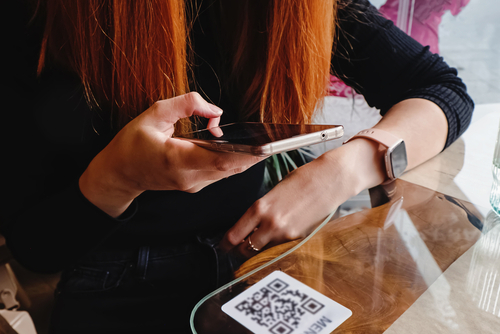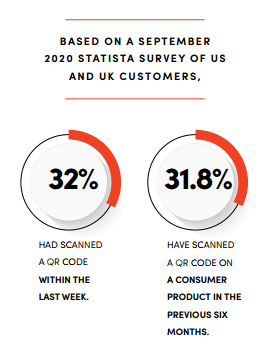The Rise, Fall and Return of the QR Code
The life of the QR (Quick Response) code has been a rollercoaster. Originally used to track vehicle parts for automotive manufacturing in the 1990s, they didn’t pop into the mainstream until the 2010s when camera-equipped mobile phones gained popularity.

QR codes found a new role in linking physical objects with online information. The mobile marketing possibilities exploded with codes added to flyers, business cards, signage, TV ads, magazines and many other forms of media. Mobile payments, event management, product information and security measures such as two-factor authentication also became practical uses.
Users could create their own custom QR codes with code generator applications. Codes linked to URLs, videos, contact details, geographic coordinates and more. Many different industries incorporated them into marketing and customer communication. The goal was to connect with customers by leveraging the on-the-go, always-available power of mobile devices.
Due to their odd square design with uniquely arranged dots and the fact that most camera-equipped devices required the use of a QR code reader app, widespread use faded. However, technology advancements and social changes in the last few years propelled QR codes back into the mainstream aligning with the rise of augmented and virtual reality. Phone cameras now have an innate ability to read QR codes and pull up URLs just by pointing the camera at the code. It eliminates the need to type in long URLs. Codes are permanent as long as the encoded link still works.

These innovations have opened doors to interactive experiences and enriched the role of QR codes in connecting the physical and digital realms. Codes today are often created with branding such as a logo in the center or incorporating on-brand color schemes. Now we see them in restaurants, digital travel tickets, on digital billboards, product packaging, pay systems, movie posters, event tickets, in-store offers and so much more. They marry the physical with the digital to create an on-going and interactive experience. Pizza Hut’s Newstalgia (New + Nostalgia) augmented reality campaign featured limited-edition pizza boxes with QR codes linked to an online AR Pac-Man game.
Today, QR cards can hold up to 7,000 characters, allowing for more detailed and complex storage. According to Bitly, QR codes have seen a 750 percent increase in downloads since spring 2020. A September 2020 Statista survey of US and UK customers found that 32 percent of those surveyed had scanned a QR code within the last week, and 31.8 percent said they have scanned one on a consumer product in the previous six months. Many onsite businesses such as restaurants began incorporating the codes linking to things such as digital menus. We see them everywhere, and customers are incorporating them into their everyday lives.
10 QR Code Uses for Direct Selling

1/ Social Media Profiles / Connect all your social media platforms in a single QR code.
2/ Targeted Landing Pages / Product-specific landing and lead-capture pages are becoming more popular in direct sales. Use specific codes for specific pages and messages.
3/ Print Ads and Signage / Create a scavenger hunt at an event; link to a coupon for a product sample or discount; or use them for promotional handouts.
4/ Product Packaging / Link to ingredients, recipes, health tips, how-to videos or even special product messaging. Create an experience!
5/ Digital Business Cards / Physical business cards are going digital, instantly creating a phone contact including all relevant contact info.
6/ Wi-Fi Access / Allow people to automatically connect to your network in an office or at an event without typing a long password.
7/ Onsite Payments / People love options when it comes to payments. Faster payments are ideal for events. A QR code can even link to more pay options.
8/ Branded Gear / Add QR codes to shirts, water bottles, bags and other branded swag that encourages people to learn more.
9/ Product Presentations / Benefits-focused presentations or demonstrations are core to direct selling. Product marketing materials can link to presentation videos.
10/ Augment Storytelling / Videos of testimonials can be linked to product packaging, marketing materials or event signage to enhance the messaging experience.
From the October 2023 issue of Direct Selling News magazine.
Credit: Source link
